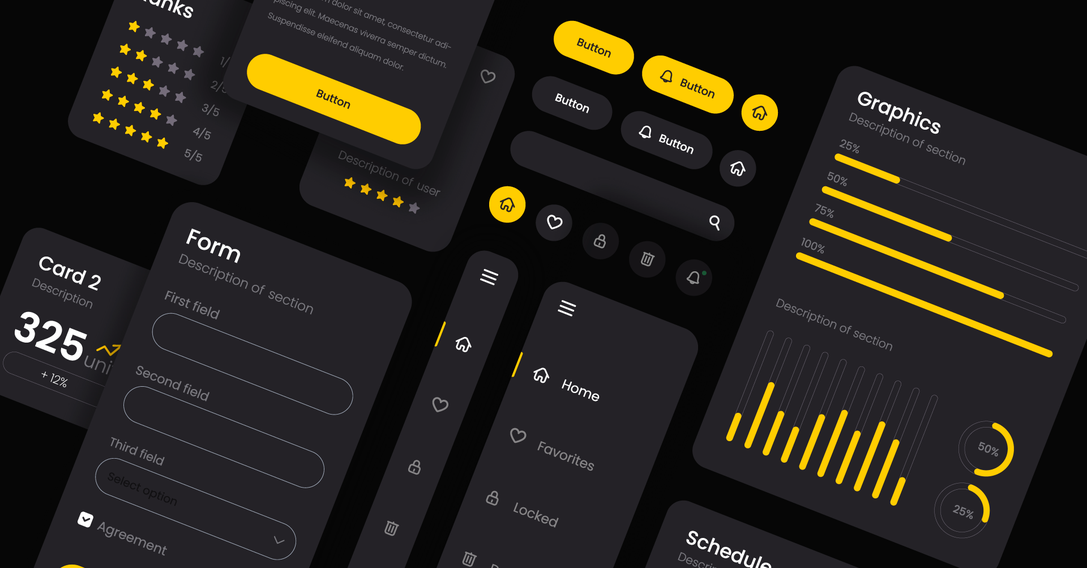6 min
June 16, 2023
Next.js
Next.js is a popular framework for web applications based on React. This framework allows you to easily build scalable web applications, improving performance and SEO optimization with server-side rendering. The idea is that you can build React applications with support for SSG, SSR, CSR, ISR, TypeScript, routing preloading and more with minimal configuration.
Listen to the audio version of this article.
Application benefits:
Server-side rendering: server-side rendering of React components, which improves performance and optimizes your application's SEO results.
Automatic performance optimization: automatically optimizes application performance, including page preloading, lazy loading and multi-threading.
Static generation: generates static application pages based on data, which improves performance and enables easy page caching.
Client navigation: enables the implementation of client navigation via the browser API to create more interactive applications.
Easy development environment configuration: provides a variety of tools to make it easy to configure the development environment for applications on React.
Routing: define application routes and handle server-side requests.
TypeScript support: Next.js has built-in support for TypeScript, making it easy to develop applications on React using TypeScript.
React.js
React is a JavaScript library for creating user interfaces. In the case of Next.js, React plays a key role, as it is through it that components and user interfaces are created. With Next.js and React working together, developing web applications becomes simpler and more efficient. Next.js provides many additional features, such as automatic performance optimization and static generation, import optimization, image optimization - which can improve performance and increase application loading speed.
Illustrations from the official NextJS website
What Next.js consists of
Next.js is a React framework that provides building blocks for creating web applications. Next.js consists of blocks(modules) that perform specific functionality and communicate with each other. The modular architecture gives us the ability to use all of them at once, as well as individual modules, and configure them based on the application's business logic and combine them with other libraries and modules of other applications.
Description of Next.js modules:
User Interface - shows how users will use and interact with the application.
Routing - controls how users navigate between other parts of the application.
Data Fetching - controls where data "lives" and how to retrieve or edit it.
Rendering - is responsible for when and where you render static or dynamic content.
Integrations - enables you to use and connect to third-party services or applications (CMS, auth, payments, etc.)
Infrastructure (Infrastructure) - implement storage and run applications (Serverless, CDN, Edge, etc.).
Performance (Performance) - optimizing applications for users.
Scalability (Scalability) - the application adapts as data and traffic and the team grows.
Comparison of Next.js with several competitors
Compared to other competitors, Next.js has several distinctive features that make it the preferred choice for many developers.
Create React App: a tool that allows you to easily get started with React without having to set up an environment. Like Next.js, Create React App offers a number of features, such as automatic code loading, JavaScript code compilation and automatic server restart when code changes. However, unlike Next.js, Create React App does not offer SSR functionality or static page generation.
Gatsby: a framework that makes it easy to create static web pages. Like Next.js, Gatsby offers many features, such as automatic performance optimization, easy development environment configuration and more. However, unlike Next.js, Gatsby focuses only on generating static pages, which means it is not suitable for web applications that require dynamic rendering.
Nuxt.js: a framework for web applications based on Vue.js. Like Next.js, Nuxt.js offers SSR and static page generation functionality, as well as many advanced features and tools. However, Next.js has a larger community and more libraries and plugins, which can make it easier to develop web applications.
Ultimately, the choice between Next.js and its competitors depends on your specific project needs. If you need a powerful and scalable framework for React-based web applications that offers many advanced features and tools, Next.js may be the right choice.
In what areas can Next.js be used
Next.js can be used in various spheres where you need a powerful and scalable web application. Below are some examples:
E-commerce: in online stores, where performance, scalability and SEO optimization are important. This framework enables fast page loading, which is especially important for online stores where users expect quick and easy access to products.
Media and entertainment: in the media and entertainment industry, where interactivity and performance of web applications are important. This framework makes it easy to create sites with interactive video player or games.
Finance and banking: in financial and banking applications where performance, scalability and security are important. This framework makes it easy to create HTTPS-secured web applications that support user authentication.
Education and training: in education and training applications where interactivity and ease of access to content is important. This framework makes it easy to create pages with interactive quizzes or training modules.
Next.js can be used in various spheres where a powerful and scalable web application is needed. The framework offers a lot of advanced features and tools to make it easier to create web applications in different spheres. You can also use Next.js to create blogs, portfolio sites, news sites, business applications and much more. With automatic server-side page rendering and optimization for SEO, Next.js-based web applications are fast and easy to index by search engines.
In summary, Next.js is a powerful and flexible framework for developing web applications. Thanks to its integration with tools and libraries such as Redux, GraphQL and Stripe, it is possible to create advanced e-commerce and other web applications with ease.






